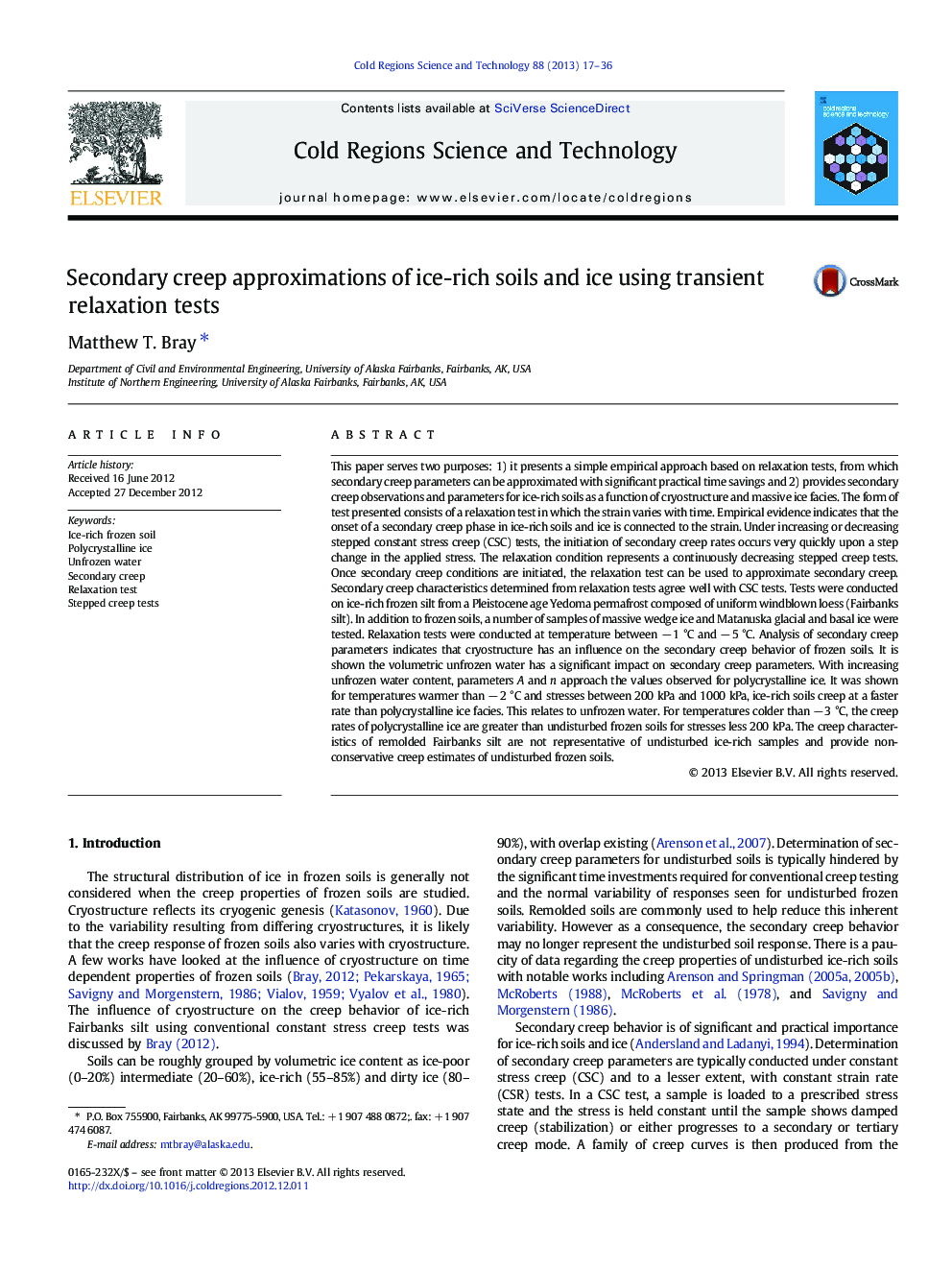| کد مقاله | کد نشریه | سال انتشار | مقاله انگلیسی | نسخه تمام متن |
|---|---|---|---|---|
| 4675850 | 1634473 | 2013 | 20 صفحه PDF | دانلود رایگان |
This paper serves two purposes: 1) it presents a simple empirical approach based on relaxation tests, from which secondary creep parameters can be approximated with significant practical time savings and 2) provides secondary creep observations and parameters for ice-rich soils as a function of cryostructure and massive ice facies. The form of test presented consists of a relaxation test in which the strain varies with time. Empirical evidence indicates that the onset of a secondary creep phase in ice-rich soils and ice is connected to the strain. Under increasing or decreasing stepped constant stress creep (CSC) tests, the initiation of secondary creep rates occurs very quickly upon a step change in the applied stress. The relaxation condition represents a continuously decreasing stepped creep tests. Once secondary creep conditions are initiated, the relaxation test can be used to approximate secondary creep. Secondary creep characteristics determined from relaxation tests agree well with CSC tests. Tests were conducted on ice-rich frozen silt from a Pleistocene age Yedoma permafrost composed of uniform windblown loess (Fairbanks silt). In addition to frozen soils, a number of samples of massive wedge ice and Matanuska glacial and basal ice were tested. Relaxation tests were conducted at temperature between − 1 °C and − 5 °C. Analysis of secondary creep parameters indicates that cryostructure has an influence on the secondary creep behavior of frozen soils. It is shown the volumetric unfrozen water has a significant impact on secondary creep parameters. With increasing unfrozen water content, parameters A and n approach the values observed for polycrystalline ice. It was shown for temperatures warmer than − 2 °C and stresses between 200 kPa and 1000 kPa, ice-rich soils creep at a faster rate than polycrystalline ice facies. This relates to unfrozen water. For temperatures colder than − 3 °C, the creep rates of polycrystalline ice are greater than undisturbed frozen soils for stresses less 200 kPa. The creep characteristics of remolded Fairbanks silt are not representative of undisturbed ice-rich samples and provide non-conservative creep estimates of undisturbed frozen soils.
► A transient relaxation test to determine secondary creep parameters is proposed.
► Relaxation tests offer significant time savings over conventional test methods.
► Unfrozen water and phase change influence secondary creep parameters.
► Polycrystalline wedge ice creep response is independent of temperature.
► For − 1 °C, ice-rich soils creep at greater rates than polycrystalline ice.
Journal: Cold Regions Science and Technology - Volume 88, April 2013, Pages 17–36
